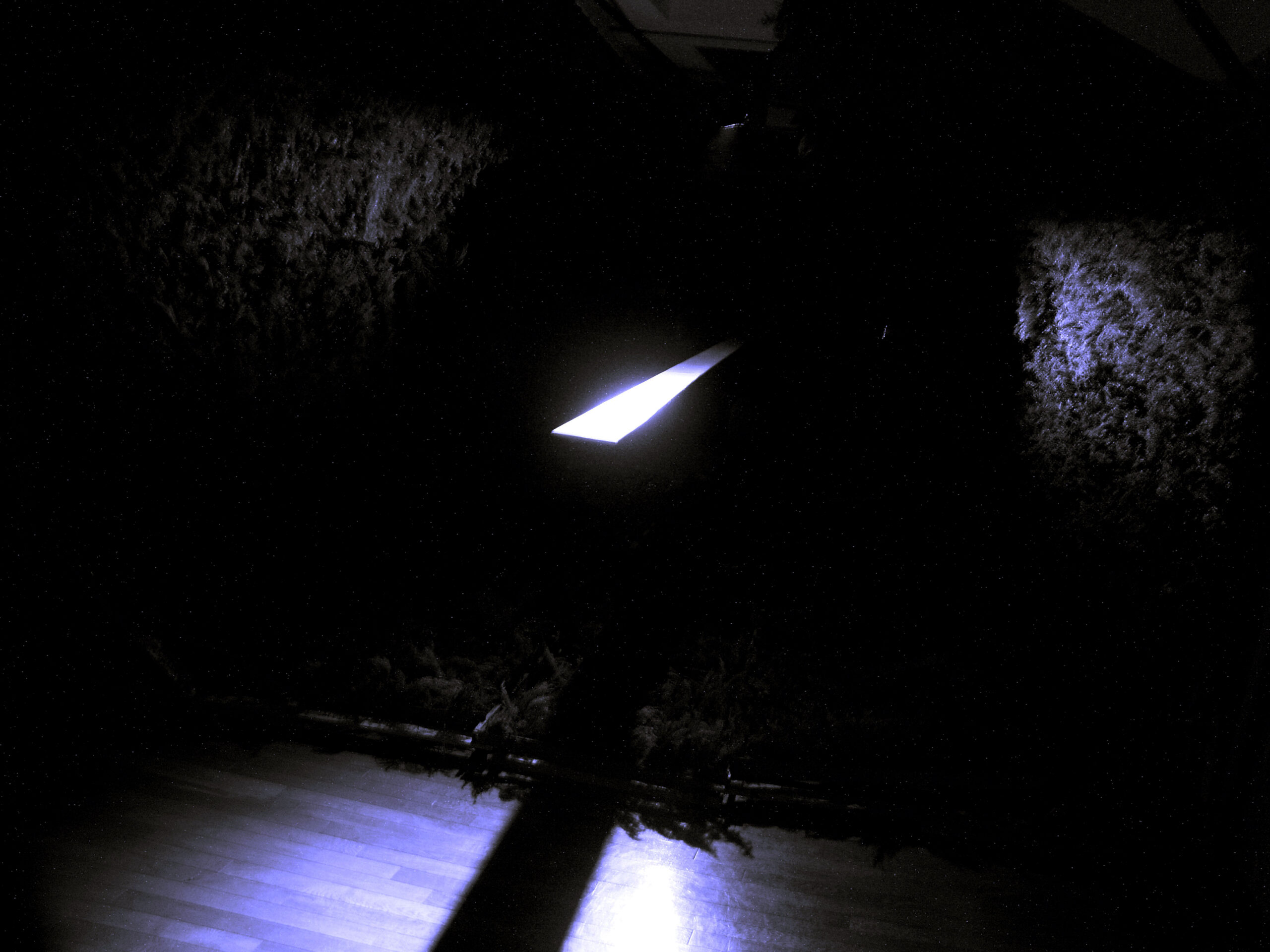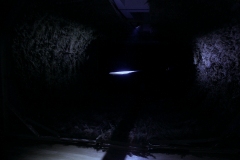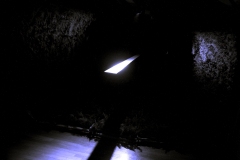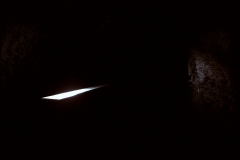Photo: Yasuhiro Chida
Rokuzan Kensei Hall/Nagano, Japan
2008
Reed, Motor, LED, Wood
W:6m D:12m H:3m
A cave made out of cotton fluff taken from about 8000 reeds was installed in the gallery. Hanging in the center is a translucent board measuring 7 meters long that vibrates faintly, making its outline rather ambiguous. Light strikes the board, causing the shadows and reflected light to quietly and gently dissolve into the walls of cotton fluff.
Just as a fish in water does not notice the water, it is difficult for us to perceive a space while we are in it. By being outside it, we become able to grasp the situation. By being aware of a situation in which that space is absent, forming an image, and perceiving it, would it be possible to deal with that space from a position outside it — outside this space that we ordinarily occupy as if it were perfectly natural to do so? In order to perceive a situation in which that space is absent, things that are equivalent to space, or more certain than it — in other words, light, time, or gravity — can serve as guideposts. <D.W>
展示室内に約8,000本の葦の綿毛による洞窟を制作。中央に7mの半透明の板が浮かぶ。板は微かに振動しその輪郭は曖昧になる。板に光が当たり、影とその反射光は静かに綿毛の内壁へ柔らかく溶けている。
水の中にいる魚が水に気づかないように、空間の中にいると空間を知覚するのは難しい。その外にいることで、それ自体を扱えるようになる。空間のない状態を意識し、イメージ、知覚することによって、私たちが当たり前のようにいる空間の外へ出て、空間を扱うことが出来るのではないだろうか。空間のない状態を感覚する為には、空間と同等もしくはより確かなもの、つまり、光や時間、重力が手がかりとなる。





